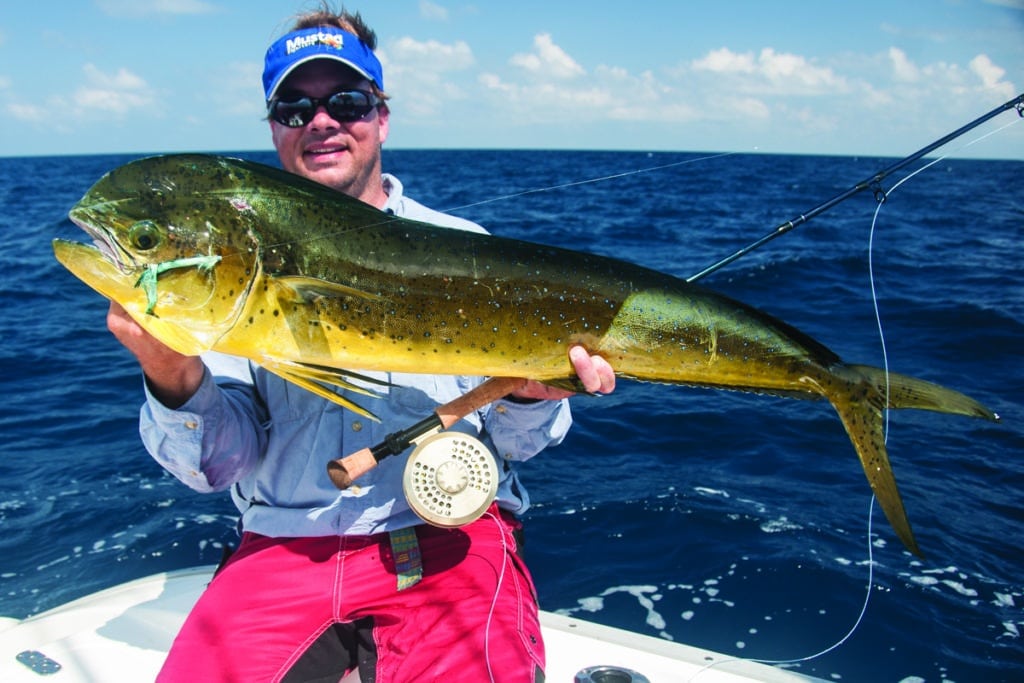
Dolphin might not be the biggest or baddest fish that swim, but their willingness to eat a fly and their spectacular acrobatics make them one of the greatest fish on fly. For the saltwater fly angler looking to move off the flats, this is a fantastic fish to start with.
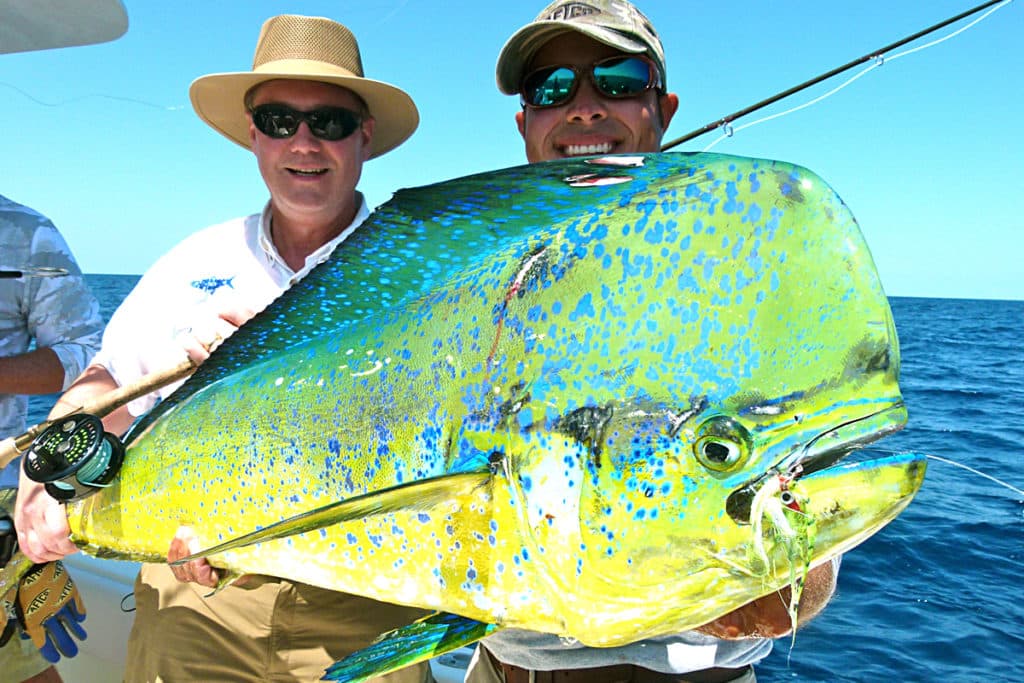
As with any migratory fish, there are better times of the year than others to target them. Spring and summer in the Florida Keys is an excellent time. They prefer clean water, so start on the edge and work your way offshore. They love structure, which typically holds bait. Structure can be bottom contours, current lines or, best of all, floating debris. There is nothing better than a weed line. The last piece of the puzzle is a frigate bird. When you find a frigate working open water or a weed line, more times than not, he is on fish — and most of the time, it will be dolphin.
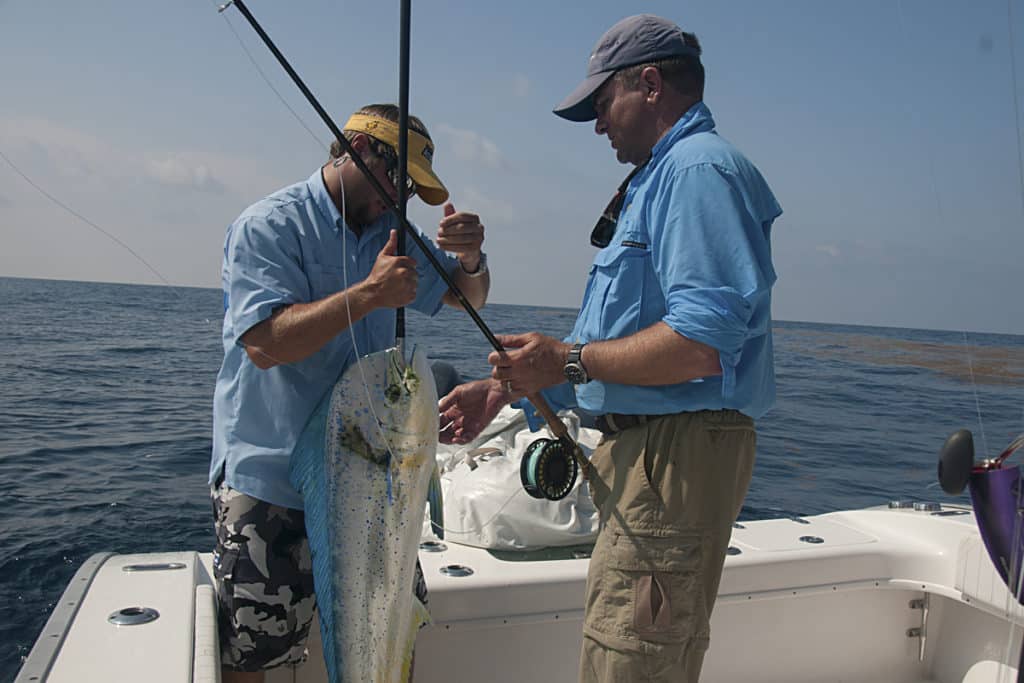
Before I leave the dock, I load up a of couple spinning rods armed with topwater poppers with the hooks removed to tease in the fish, either casting or trolling. Another good choice for trolling is ballyhoo rigged hookless. If possible, take live bait for chumming. Pilchards are best, but almost any small, fast swimming baitfish will work. If you don’t have that option, dead chum helps keep fish around the boat when you find them.
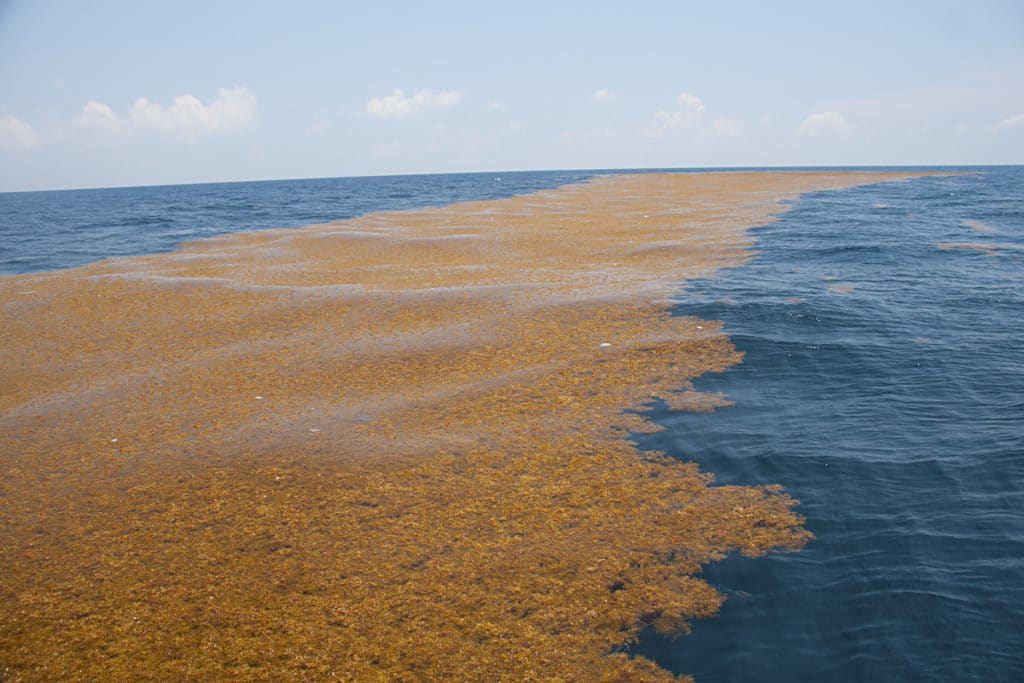
Run and Gun
Once you find a weed line, debris or scattered grass, it’s time to get to work. You can drive around hunting for fish or take a proactive role and search with your teasers. Whether you cast with the hookless poppers or troll hookless baits, you are covering water and increasing your odds of finding fish. I like to concentrate on the heaviest areas of grass or debris. If I am on a weed or current line, I will parallel it.
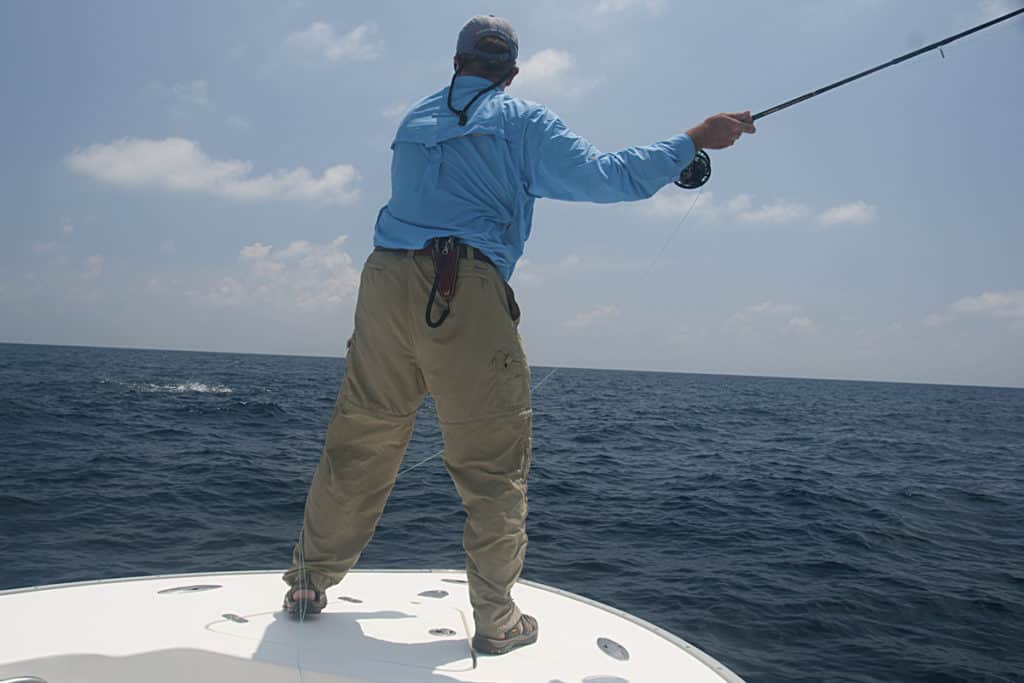
I have my fly line stripped off the reel, on the deck or in a bucket. If I’m trolling, I set up in the back right corner because I am right-handed. If we are in the bow and casting with poppers to tease them in, I manage my line on the deck as I wait for my shot. Many times you will find dolphin and not have to worry about teasing them in. Their curiosity often brings them to the boat. Once they show, feeding them chum keeps them engaged and allows you multiple opportunities at fish. If they start to lose interest, I like to work the popper around and get them fired up again.
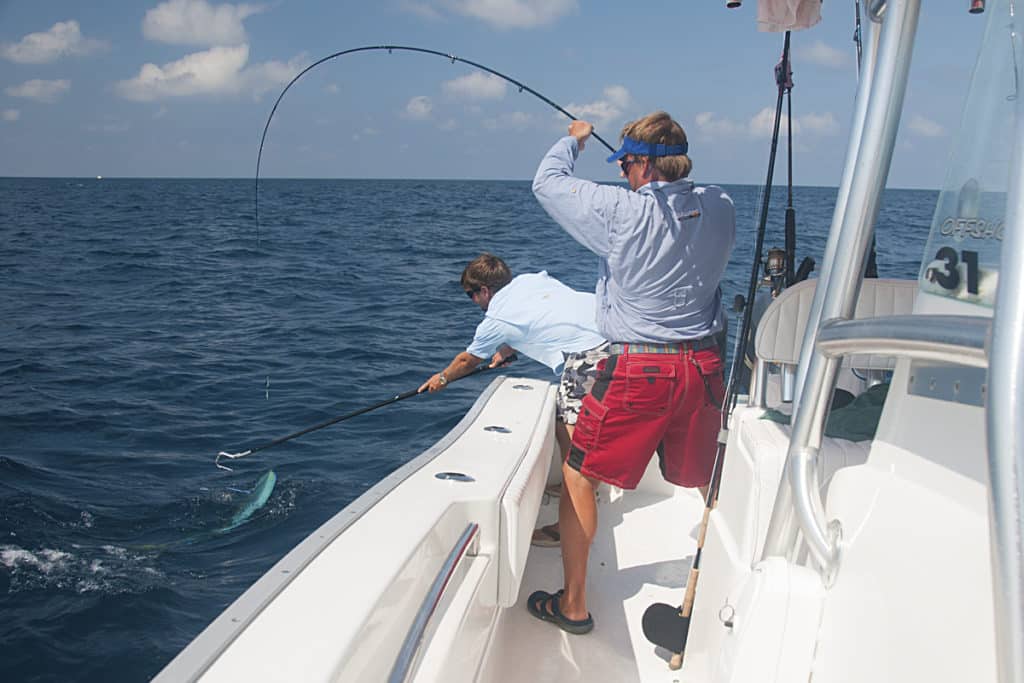
The placement of the fly is important when teasing dolphin with a popper. If you cast behind the popper, chances are the fish won’t see the fly because they are focused on the popper. Cast the fly in front of the popper and bring the popper toward the fly. Getting them to eat is not difficult. Make a good presentation and strip aggressively.
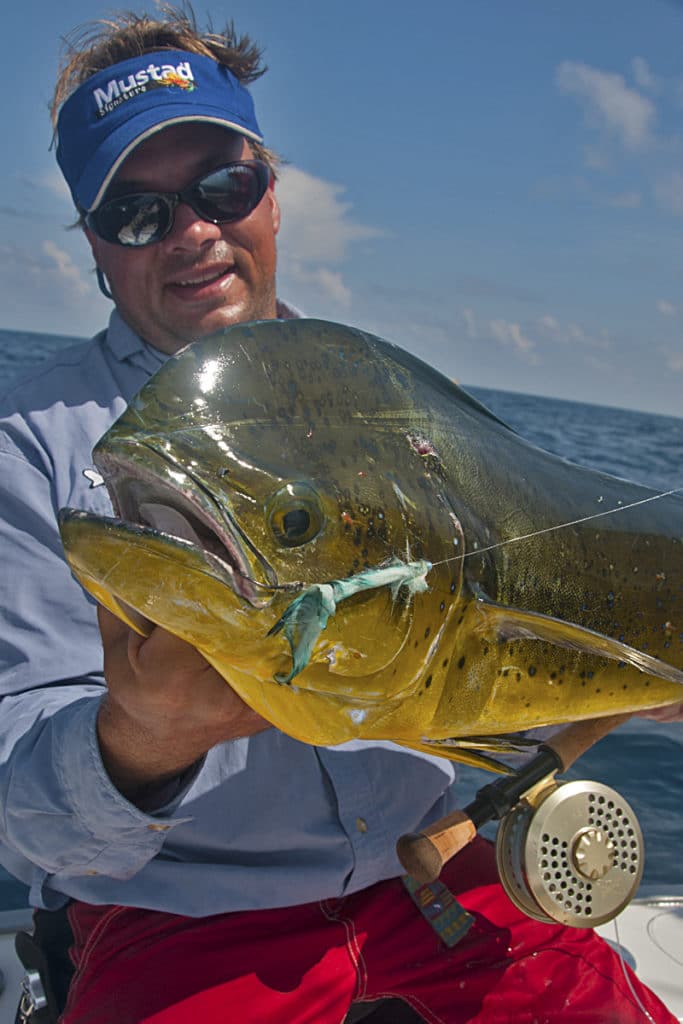
I have a variety of subsurface baitfish patterns both weighted and unweighted and a number of poppers I like to throw. They are also suckers for green-and-yellow or pink-and-white flies. For the most part, all you will need is a 8- to 10-weight outfit. I rarely fish anything but a floating line.
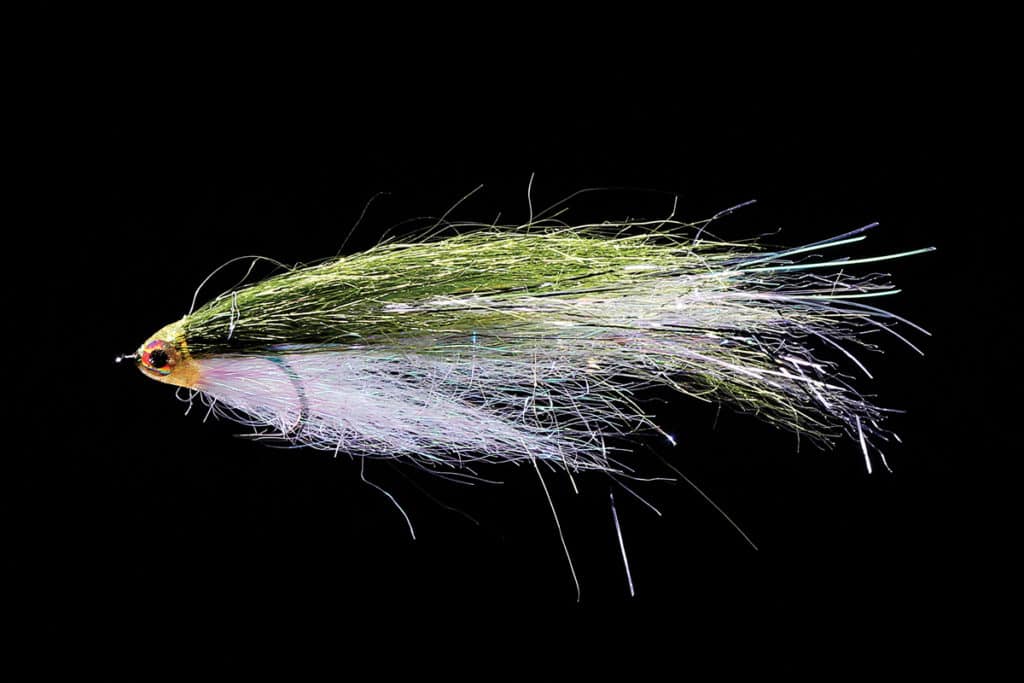
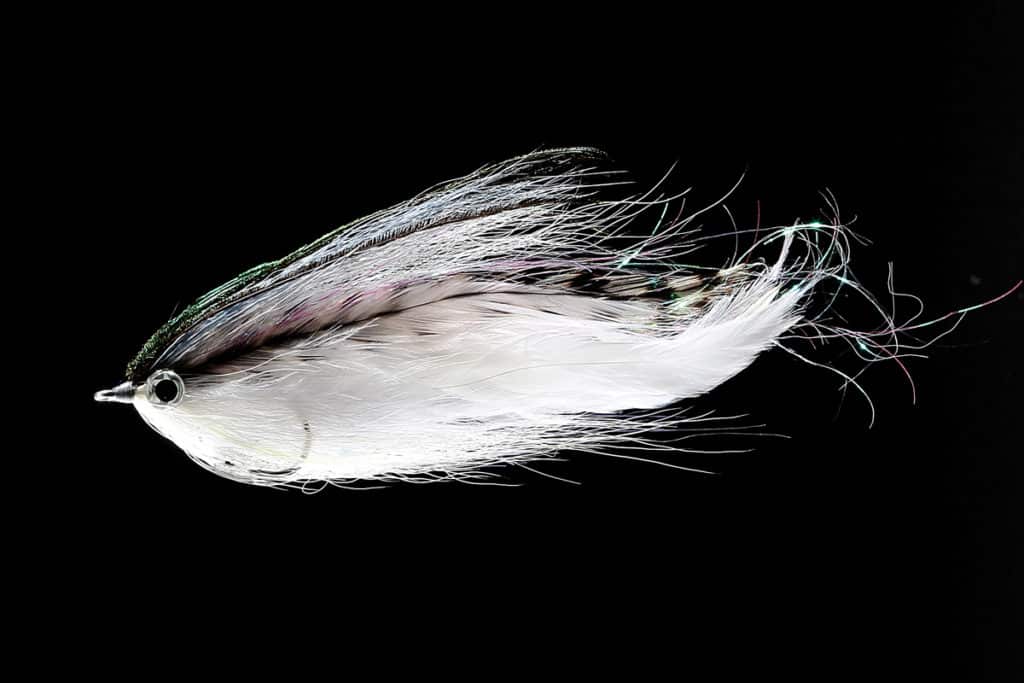
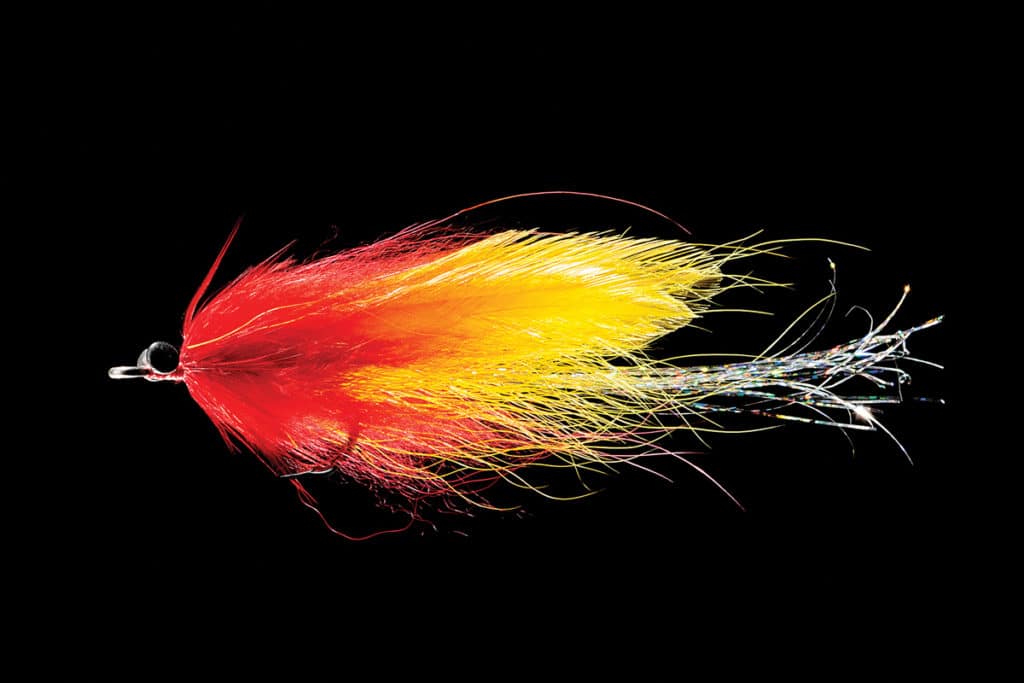
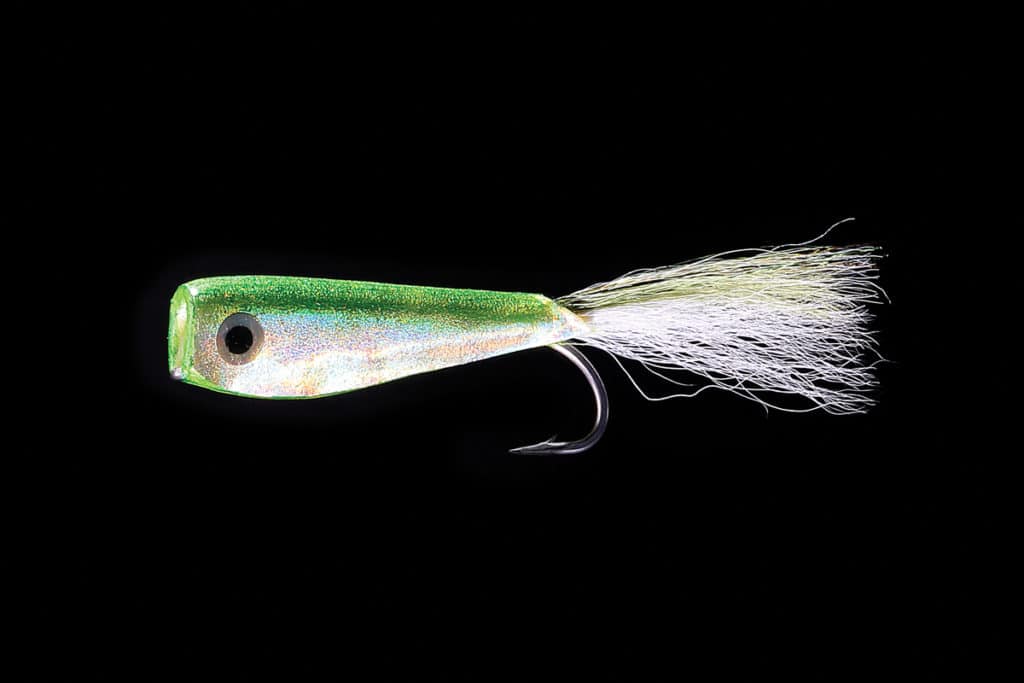
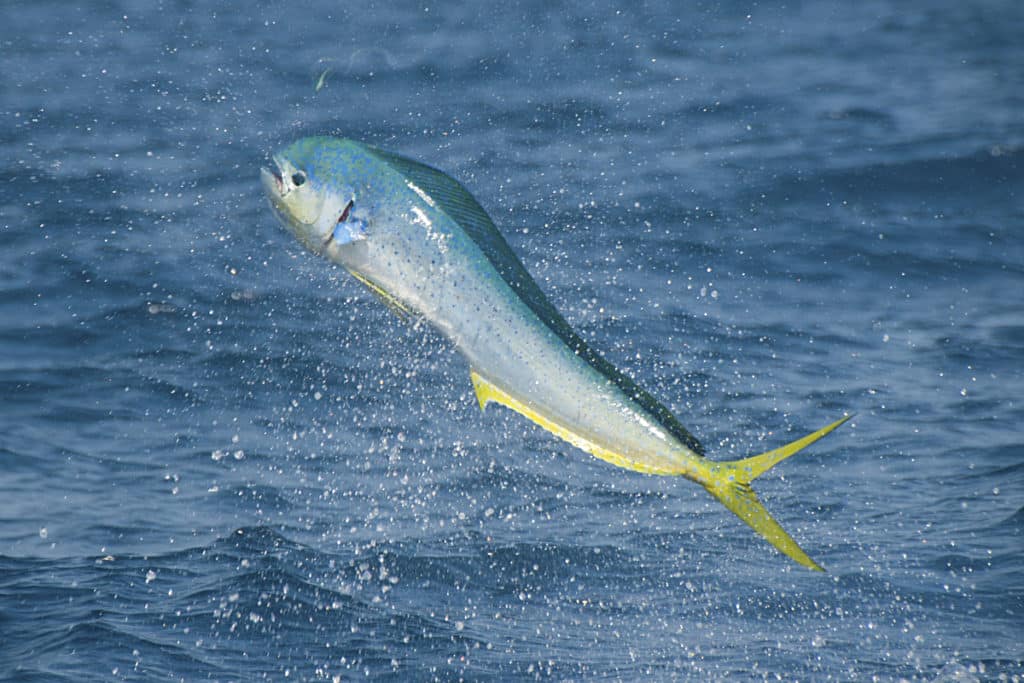
So now that you have the basics, go hook ’em up and let the show begin. It never gets old for me watching dolphin running and jumping.









